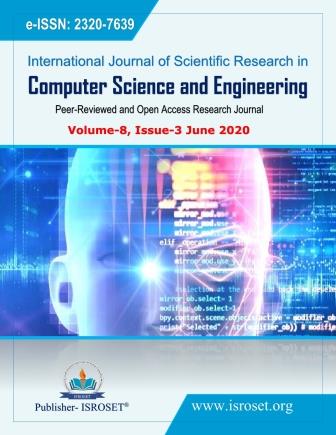Drone of Gafsa: A Wind-powered UAV as Flying RSU in VANET
Keywords:
VANET, Road safety, UAV, RSU, Wind energyAbstract
Improving the road safety of vehicles, avoiding traffic jams, providing convenience and comfort to passengers and drivers, efficient travel are the objectives of Vehicular Ad-hoc Networks (VANETs). All these objectives are achieved through effective communication between vehicles and other VANET components (Road Side Unit (RSU), Unmanned Aerial Vehicle (UAV), etc...). The RSU or UAV sends (and / or) receives messages (to / from) vehicles within its coverage area. Drone can perform other operations related to road traffic management. However, it has a constraint related to its battery autonomy. Besides, all drones operating in smart cities for traffic management work in coordination with other drones or partially. We propose a new VANET architecture where UAV replaces RSU. In addition, we propose a charging mechanism using wind energy. The simulation results show an affinity between the values obtained following the use of RSU and UAV. As it shows acceptable and workable results for the proposed charging mechanism
References
Volvo will test self-driving cars with real customers in 2017. http://www.wired.com/2015/02/volvo-will-test-self-driving-cars-real- customers-2017.
A. B. Reis, S. Sargento, and O. K. Tonguz, ?On the performance of sparse vehicular networks with road side units,? in 2011 IEEE 73rd Vehicular Technology Conference (VTC Spring), May 2011, pp. 1?5.
W. Shi, H. Zhou, J. Li, W. Xu, N. Zhang, and X. Shen, ?Drone assisted vehicular networks: Architecture, challenges and opportunities,? IEEE Network, vol. 32, no. 3, pp. 130?137, May 2018.
P. Patil and A. Gokhale, ?Voronoi-based placement of road-side units to improve dynamic resource management in vehicular ad hoc networks,? in 2013 International Conference on Collaboration Technologies and Systems (CTS), May 2013, pp. 389?396.
N. Wisitpongphan, F. Bai, P. Mudalige, V. Sadekar, and O. Tonguz, ?Routing in sparse vehicular ad hoc wireless networks,? IEEE Journal on Selected Areas in Communications, vol. 25, no. 8, pp. 1538?1556, Oct 2007.
H. Menouar, I. Guvenc, K. Akkaya, A. S. Uluagac, A. Kadri, and A.Tuncer, ?Uav-enabled intelligent transportation systems for the smart city: Applications and challenges,? IEEE Communications Magazine, vol. 55, no. 3, pp. 22?28, March 2017.
S. Morton, R. D?Sa, and N. Papanikolopoulos, ?Solar powered uav: Design and experiments,? in 2015 IEEE/RSJ International Conference on Intelligent Robots and Systems (IROS), Sep. 2015, pp. 2460?2466.
A. Noth, W. Engel, and R. Siegwart, ?Design of an ultra-lightweight autonomous solar airplane for continuous flight,? in Field and Service Robotics, P. Corke and S. Sukkariah, Eds. Berlin, Heidelberg: Springer Berlin Heidelberg, 2006, pp. 441?452.
A. Noth, M. W. Engel, and R. Siegwart, ?Flying solo and solar to mars,? IEEE Robotics Automation Magazine, vol. 13, no. 3, pp. 44?52, Sep. 2006.
A. North, R. Siegwart, and W. Engel, Autonomous Solar UAV for Sustainable Flights. Dordrecht: Springer Netherlands, 2007, pp. 377? 405.
A. F. Burke, ?Batteries and ultracapacitors for electric, hybrid, and fuel cell vehicles,? Proceedings of the IEEE, vol. 95, no. 4, pp. 806?820, April 2007.
T. Long, M. Ozger, O. Cetinkaya, and O. B. Akan, ?Energy neutral internet of drones,? IEEE Communications Magazine, vol. 56, no. 1, pp. 22?28, Jan 2018.
Downloads
Published
How to Cite
Issue
Section
License

This work is licensed under a Creative Commons Attribution 4.0 International License.
Authors contributing to this journal agree to publish their articles under the Creative Commons Attribution 4.0 International License, allowing third parties to share their work (copy, distribute, transmit) and to adapt it, under the condition that the authors are given credit and that in the event of reuse or distribution, the terms of this license are made clear.







